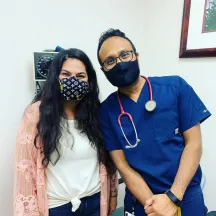Left hemicolectomy for colon cancer
A left hemicolectomy is a common surgery for colorectal cancer.

What is a left hemicolectomy?
This surgery removes a portion of the transverse colon, the descending colon, and the sigmoid colon, and then connects the transverse colon to the rectum. Some lymph nodes and surrounding tissue are also removed.

Left hemicolectomy methods
Your surgeon may perform your hemicolectomy as an open surgery, laparoscopic surgery, or robotic-assisted surgery.
The technique will depend on:
- your overall health
- tumor size
- the surgeon's experience and preference

Will I need a colostomy bag?
It's important to talk to your surgeon about your specific case and whether you will need a colostomy.
Some left hemicolectomy surgeries do not require a stoma if the surgeon is able to connect the two ends of the colon together. The part of the colon that is joined is called an anastomosis.

Recovery
After left hemicolectomy surgery:
- You will have some pain that can be controlled with medication.
- For a few days, you may be on a liquid diet to let your colon heal.
- Bowel function usually returns within three days after surgery.
- Your doctor will determine when you can return to work, driving, and other activities.

Risks and possible complications
Risks of any surgery depend on several factors, including your overall health and the extent of the surgery.
Problems are rare but can include:
- infection
- bleeding
- blood clots in the legs (DVT)
- leak at the anastomosis
- scar tissue in the abdominal cavity (adhesions)
Other colorectal cancer surgeries
Sigmoid colectomyTop resources

"Clinical trials gave us time": A daughter’s tribute to her mother’s courage
When Kate Shin’s mother faced rectal cancer, clinical trials gave them precious time together. Now, Kate shares her story to encourage access to screening and innovative care, including clinical trials.

2025 ASCO update: Six big studies
The 2025 ASCO Annual Meeting featured several important studies that could change how colorectal cancer is treated, including a pivotal study for BRAF V600E patients.

Finding hope and healing with the Alliance
Discover hope and healing through Angela and Marleigh Cummins' powerful journey after losing Rodney to colorectal cancer. Learn how their partnership with the Colorectal Cancer Alliance turned grief into advocacy, raising awareness and fostering community support to take on colorectal cancer.





